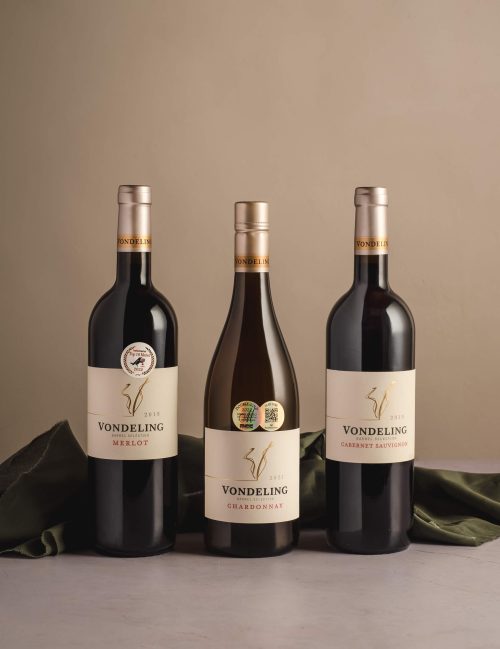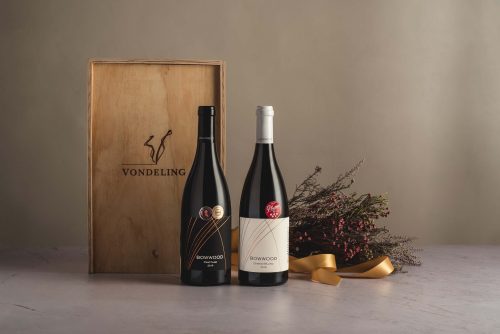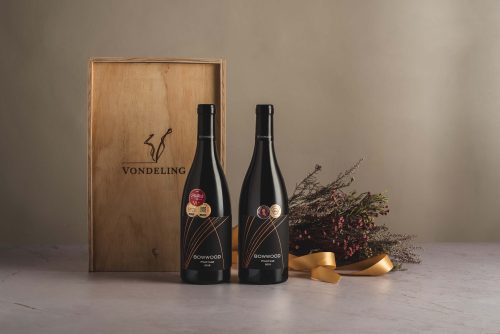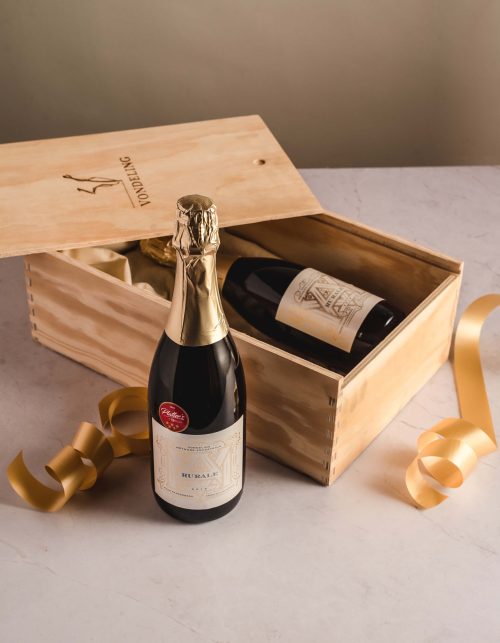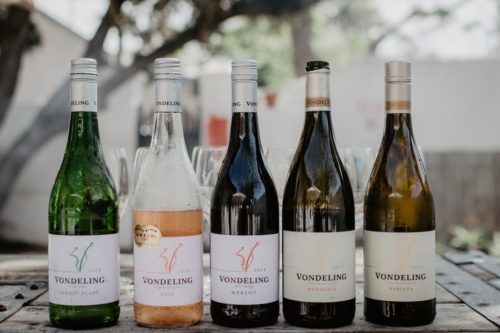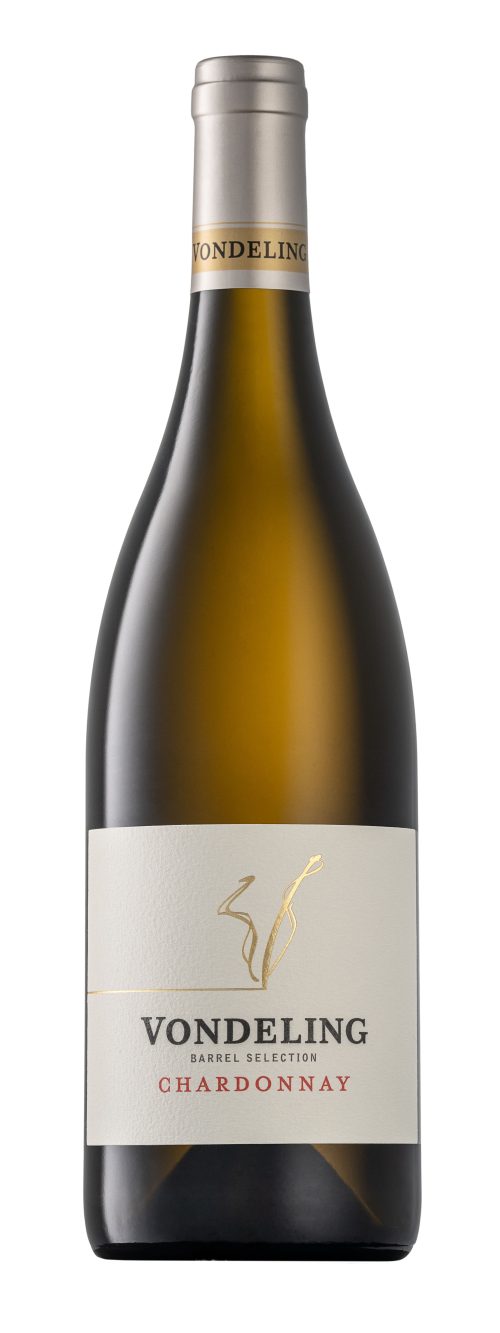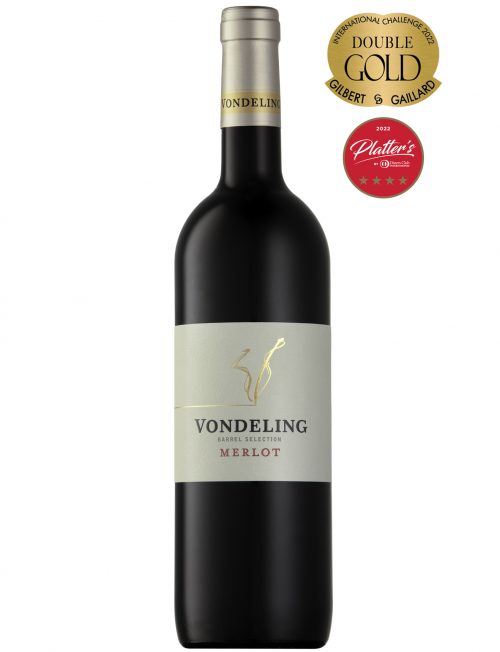-
 Club Collection Sauvignon Blanc 2023 A Final Tribute to a Legendary Vine The 2023 vintage of our Old Vine Sauvignon Blanc is the final release from the Herb Block, a plot that has produced exceptional fruit since its planting in 1983. As we bid farewell to these legendary vines, we crafted a wine that truly honors their legacy—one that’s as unique and complex as the vines themselves.This limited release is a final homage to a block of old vines that has given us so much over the years. It’s a wine for collectors, for those who appreciate rarity and the artistry of exceptional viticulture. VINIFICATION To bring out the best of this remarkable fruit, the grapes were whole-bunch pressed into egg-shaped concrete tanks, where wild yeast fermentation began naturally. This unique approach allows the wine to capture a sense of place, while minimizing the influence of overbearing fruitiness. A partial malolactic fermentation softens the acidity, while extended maturation on the lees imparts layers of creaminess and body, resulting in a wine with impressive length and texture. TASTING NOTES This wine opens with fresh aromas of ripe kiwi fruit and delicate apple blossoms, creating a fragrant and inviting nose. On the palate, the wine reveals a rich, textural mouthfeel—thanks to the extended lees contact—balanced by gentle tropical fruit notes. The fruit is restrained yet vibrant, offering a harmonious blend of bright citrus and subtle tropical nuances. A lovely creaminess coats the palate, adding depth and elegance, while the finish is long, smooth, and refreshingly clean. Analysis pH 3.47 Total Acidity 6.2 g/l Residual Sugar 3.6 g/l Alcohol 14.32 % DOWNLOAD TASTING NOTES: 2023
Club Collection Sauvignon Blanc 2023 A Final Tribute to a Legendary Vine The 2023 vintage of our Old Vine Sauvignon Blanc is the final release from the Herb Block, a plot that has produced exceptional fruit since its planting in 1983. As we bid farewell to these legendary vines, we crafted a wine that truly honors their legacy—one that’s as unique and complex as the vines themselves.This limited release is a final homage to a block of old vines that has given us so much over the years. It’s a wine for collectors, for those who appreciate rarity and the artistry of exceptional viticulture. VINIFICATION To bring out the best of this remarkable fruit, the grapes were whole-bunch pressed into egg-shaped concrete tanks, where wild yeast fermentation began naturally. This unique approach allows the wine to capture a sense of place, while minimizing the influence of overbearing fruitiness. A partial malolactic fermentation softens the acidity, while extended maturation on the lees imparts layers of creaminess and body, resulting in a wine with impressive length and texture. TASTING NOTES This wine opens with fresh aromas of ripe kiwi fruit and delicate apple blossoms, creating a fragrant and inviting nose. On the palate, the wine reveals a rich, textural mouthfeel—thanks to the extended lees contact—balanced by gentle tropical fruit notes. The fruit is restrained yet vibrant, offering a harmonious blend of bright citrus and subtle tropical nuances. A lovely creaminess coats the palate, adding depth and elegance, while the finish is long, smooth, and refreshingly clean. Analysis pH 3.47 Total Acidity 6.2 g/l Residual Sugar 3.6 g/l Alcohol 14.32 % DOWNLOAD TASTING NOTES: 2023 -

(Limited to 15 cases only)
(Shiraz 50%, Mourvédre 30%, Carignan 7% & Grenache Noir 13%) Vondeling Monsonia is named after Monsonia Speciosa, a very rare species of fynbos (vegetation type occurring in the Western Cape region of South Africa) found in the Paardeberg mountain, the home of Vondeling wines. THE NAME MONSONIA The flower was named after Lady Anne Monson, the great-grandchild of King Charles II. Controversially, her first marriage was dissolved, due to the birth of an illegitimate child but she soon remarried Colonel George Monson of the Indian Military. She was known as a “remarkable lady botanist” and was instrumental in translating Linnaeus’s famous “Philosophia Botanica”. On her way to Calcutta, she visited the Cape of Good Hope and accompanied seasoned collector of South African plants, Carl Peter Thunberg, on several expeditions around the Cape. In 1774, he named the Monsonia species of plants after her. VINEYARDS The Shiraz vines grow in ancient, well-weathered granite soils on southeast-facing slopes – ideal for our warm South African climate. In total, six clones of Shiraz can be found on the farm and only the best performing clones go into the final blend. Typically, each clone contributes different characteristics to the wine and the different blocks are picked at varying degrees of ripeness, best suited to their character. The Mourvedre, Carignan, and Grenache are best adapted to hot sun and are grown as bush vines on North East-facing slopes. Highly selective hand-picking guarantees that only the best fruit arrives at the winery. VINIFICATION After being chilled overnight, bunches are partially destemmed, but not crushed, and whole berry fermentation takes place in open-top fermentation tanks. An initial two-day period of cold soaking is applied before wild yeast fermentation is allowed to commence. During fermentation, hand plunging, commonly known as "punch downs" is the method of mixing and extraction. After fermentation, the wine is pressed in a traditional boutique-size basket press. All wine is then transferred directly to barrel where malolactic fermentation takes place. Only large format French oak barrels are used, with about one-third new and the rest 2nd and 3rd fill. The wine is allowed to mature for 16 months before a final barrel selection, blending and bottling takes place. TASTING NOTES & CELLARING & FOOD PAIRING Vibrant and clear charcoal red with beautifully viscous legs clinging to the glass. Each grape component vies for attention in this kaleidoscopic bouquet. Sweet Lillies and rose-petal Turkish delight from the Grenache. Plush black currant and blueberries from the Carignan. All wrapped in a velvety blanket of red berries and soft spice from the Shiraz. A smooth, velvety palate devoid of harsh or grippy tannin. Red cherry candy and sweet plumb at the fore with a soft plush center and subtle spice with roasted coconut at the end. Well paired with a mature steak, barbequed over a hotbed of coals and served with sauteed baby mushrooms, or try a hearty, slow-cooked pork belly with root vegetables and tomatoes. ACCOLADES 2017 Vintage: 2020 Michelangelo Awards - Gold 2021 Platter Guide 4,5 Stars (94 Pts) Analysis pH 3.44 Total Acidity 5.7 g/l Residual Sugar 2.9 g/l Alcohol 14.16 % DOWNLOAD TASTING NOTE -
 A Hidden Gem from Babiana Our 2023 Grenache Blanc is a true "stolen" treasure, a secret ingredient we typically reserve for our signature Babiana blend. This year, we had just a little extra Grenache Blanc than usual, and we couldn’t resist sharing this unique expression with our loyal members. A wine that’s normally kept under wraps, it’s now available as a limited release to those who appreciate the rare and special moments in winemaking. Winemaking Story The grapes were whole-bunch pressed and fermented in egg- shaped concrete tanks using wild yeast, allowing the wine to develop naturally and express the true character of its vineyard. A partial malolactic fermentation softens any harsh acidity, while extended maturation on the lees contributes to a rich, creamy texture and enhanced body. The result is a wine with depth, length, and complexity, all while maintaining a vibrant freshness. TASTING NOTES This Grenache Blanc opens with bright, enticing aromas of fresh peach, citrus blossoms, and a touch of white floral notes. On the palate, the wine is rich and textured, with layers of stone fruit and subtle citrus that give it a lively character. The mouthfeel is creamy and smooth, supported by a refreshing, clean finish. The combination of bright fruit and smooth texture makes this wine both elegant and easy to enjoy, with a lingering minerality that adds a touch of intrigue. 2023 Analysis pH 3.44 Total Acidity 6.1 g/l Residual Sugar 3.3 g/l Alcohol 14.29 %
A Hidden Gem from Babiana Our 2023 Grenache Blanc is a true "stolen" treasure, a secret ingredient we typically reserve for our signature Babiana blend. This year, we had just a little extra Grenache Blanc than usual, and we couldn’t resist sharing this unique expression with our loyal members. A wine that’s normally kept under wraps, it’s now available as a limited release to those who appreciate the rare and special moments in winemaking. Winemaking Story The grapes were whole-bunch pressed and fermented in egg- shaped concrete tanks using wild yeast, allowing the wine to develop naturally and express the true character of its vineyard. A partial malolactic fermentation softens any harsh acidity, while extended maturation on the lees contributes to a rich, creamy texture and enhanced body. The result is a wine with depth, length, and complexity, all while maintaining a vibrant freshness. TASTING NOTES This Grenache Blanc opens with bright, enticing aromas of fresh peach, citrus blossoms, and a touch of white floral notes. On the palate, the wine is rich and textured, with layers of stone fruit and subtle citrus that give it a lively character. The mouthfeel is creamy and smooth, supported by a refreshing, clean finish. The combination of bright fruit and smooth texture makes this wine both elegant and easy to enjoy, with a lingering minerality that adds a touch of intrigue. 2023 Analysis pH 3.44 Total Acidity 6.1 g/l Residual Sugar 3.3 g/l Alcohol 14.29 % -
 VINEYARDS Bowwood Pinotage is made from a small, single vineyard, planted in clay-rich gravel soils in 1998. The vineyard is shy bearing with poor vigour, which ensures tiny berries with hugely concentrated flavour. A North-South row orientation exposes the grapes to plenty of gentle morning and late afternoon sunshine, perfect for intense colour and aromatic development. VINIFICATION The grapes are hand-picked in early February with a ripeness of 25 Balling. Each bunch is pre-chilled before being destemmed and berry sorted. The berries are not crushed but are fermented whole. This allows for a gradual extraction of tannins and colour, which promotes finesse, balance and longevity. The berries are fermented in open-top fermenters, which provide easy access for the winemaker to assess and manipulate the fermentation. The wine is punched down regularly for 8 days and then basket pressed directly to new and second fill, 300L American oak barrels. Malolactic fermentation takes place in the barrel, which promotes harmony and seamless integration of the oak flavours. The wine is further matured on the yeast and malolactic lees for 18 months. At this point, the finest 12 barrels are selected, blended and returned to barrel for an additional 6 months. Finally, the wine is kept for 4 months in a stainless-steel tank to promote stability and clarification, before it is bottled and laid to rest for a full year before it is released. TASTING NOTES & CELLARING & FOOD PAIRING Opaque in colour with dark hues of purple and red, it delivers an intense black cherry and plum bouquet interlaced with sweet cloves and vanillarich oak. Bold fruit and pungent spice aromatics persist on the palate with undertones of roasted almonds and cigar smoke. The palate is broad and rich with soft acidity and abundant, fine tannin. A luxurious, full-flavored, and modern wine. ACCOLADES 2018 Vintage: 2021 Michelangelo – Double Gold 2021 Veritas – Gold 2022 Platter’s Guide – 4.5 Stars (94pts) 2022 Gilbert & Gaillard -Double Gold (92pts) 2019 Vintage: 2022 ABSA TOP 10 Winner 2022 Veritas- Double Gold Analysis pH 3.58 Total Acidity 5.7 g/l Residual Sugar 2.0 g/l Alcohol 14.21 % DOWNLOAD TASTING NOTE
VINEYARDS Bowwood Pinotage is made from a small, single vineyard, planted in clay-rich gravel soils in 1998. The vineyard is shy bearing with poor vigour, which ensures tiny berries with hugely concentrated flavour. A North-South row orientation exposes the grapes to plenty of gentle morning and late afternoon sunshine, perfect for intense colour and aromatic development. VINIFICATION The grapes are hand-picked in early February with a ripeness of 25 Balling. Each bunch is pre-chilled before being destemmed and berry sorted. The berries are not crushed but are fermented whole. This allows for a gradual extraction of tannins and colour, which promotes finesse, balance and longevity. The berries are fermented in open-top fermenters, which provide easy access for the winemaker to assess and manipulate the fermentation. The wine is punched down regularly for 8 days and then basket pressed directly to new and second fill, 300L American oak barrels. Malolactic fermentation takes place in the barrel, which promotes harmony and seamless integration of the oak flavours. The wine is further matured on the yeast and malolactic lees for 18 months. At this point, the finest 12 barrels are selected, blended and returned to barrel for an additional 6 months. Finally, the wine is kept for 4 months in a stainless-steel tank to promote stability and clarification, before it is bottled and laid to rest for a full year before it is released. TASTING NOTES & CELLARING & FOOD PAIRING Opaque in colour with dark hues of purple and red, it delivers an intense black cherry and plum bouquet interlaced with sweet cloves and vanillarich oak. Bold fruit and pungent spice aromatics persist on the palate with undertones of roasted almonds and cigar smoke. The palate is broad and rich with soft acidity and abundant, fine tannin. A luxurious, full-flavored, and modern wine. ACCOLADES 2018 Vintage: 2021 Michelangelo – Double Gold 2021 Veritas – Gold 2022 Platter’s Guide – 4.5 Stars (94pts) 2022 Gilbert & Gaillard -Double Gold (92pts) 2019 Vintage: 2022 ABSA TOP 10 Winner 2022 Veritas- Double Gold Analysis pH 3.58 Total Acidity 5.7 g/l Residual Sugar 2.0 g/l Alcohol 14.21 % DOWNLOAD TASTING NOTE -
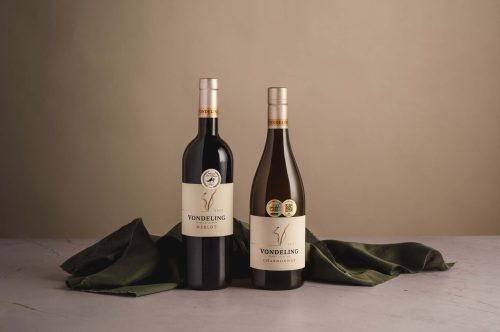
Barrel Selection Gift Pack (2 pack option)
R540.00 (incl. VAT)
Option 1: Barrel Selection Chardonnay 2023 & Barrel Selection Merlot 2022 OR Option 2: Barrel Selection Chardonnay 2023 & Barrel Selection Cabernet Sauvignon 2021 Packaged in a sophisticated, branded 2-pack cardboard wine carrier, finished with ribbon & fynbos from the farm. -
Out of stock
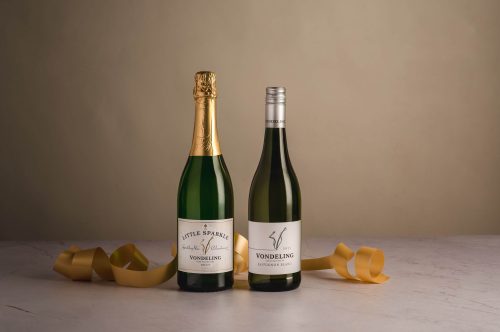
Festive Summer Gift Pack (2 pack option)
R375.00 (incl. VAT)
Little Sparkle (100% Chardonnay Sparkling Brut) & Option 1: Sauvignon Blanc 2024 OR Option 2: Petit Chenin Blanc 2024 OR Option 3: Petit Rouge Merlot 2022 OR Option 4: Baldrick Shiraz 2022 Packaged in a sophisticated, branded 2-pack cardboard wine carrier, finished with ribbon & fynbos from the farm. -
Out of stock
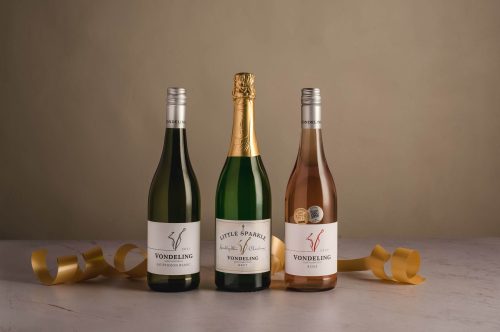
Petit Gift Pack (3 pack option)
R460.00 (incl. VAT)
Petit Chenin Blanc 2024 OR Sauvignon Blanc 2024 & Little Sparkle (100% Chardonnay Sparkling Brut) & Rose 2024 Packaged in a sophisticated, branded 3-pack cardboard wine carrier, finished with ribbon & fynbos from the farm. -
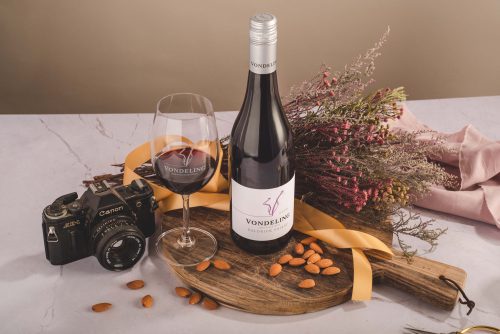

Petit Gift Pack (2 pack option)
R325.00 (incl. VAT)
Option 1: Petit Chenin Blanc 2024 & Baldrick Shiraz 2022 OR Option 2: Petit Rouge Merlot 2022 & Sauvignon Blanc 2024 OR Option 3: Petit Chenin Blanc 2024 & Rose 2024 OR Option 4: Petit Rouge Merlot 2022 & Rose 2024 Packaged in a sophisticated, branded 2-pack cardboard wine carrier, finished with ribbon & fynbos from the farm. -
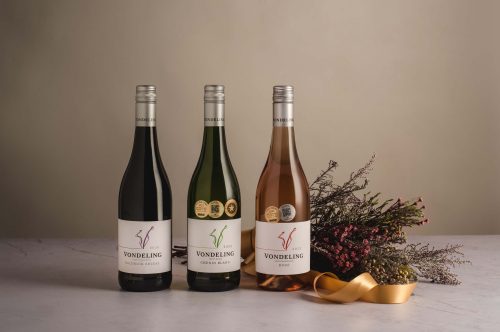
Petit Gift Pack (3 pack option)
R460.00 (incl. VAT)
Option 1: Petit Chenin Blanc 2024 & Rose 2024 & Petit Rouge Merlot 2021 OR Option 2: Petit Chenin Blanc 2024 & Rose 2024 & Baldrick Shiraz 2022 OR Option 3: Sauvignon Blanc 2024 & Rose 2024 & Petit Rouge Merlot 2021 OR Option 4: Sauvignon Blanc 2024 & Rose 2024 & Baldrick Shiraz 2022 Packaged in a sophisticated, branded 3-pack cardboard wine carrier, finished with ribbon & fynbos from the farm. -
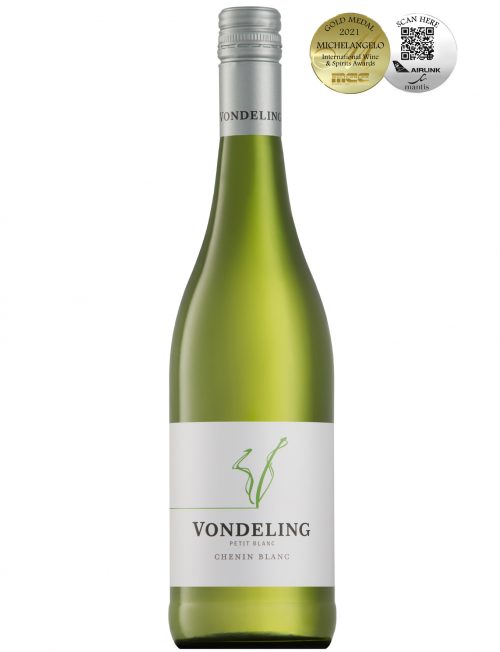 VINEYARDS Beautiful mature Chenin Blanc planted on south-facing slopes and composed exclusively of shy bearing, wellweathered granite soils. These vineyards produce a low average crop of only 9 tons per hectare, which ensures a tremendous concentration of fruit flavours on the palate. All the fruit is hand-picked on taste at optimum ripeness, ranging from 21-23ºB. VINIFICATION Our grapes are picked in the cool, early hours of the morning and processed immediately. The grapes are destemmed and chilled further before they are pressed. This short supply from vine to press ensures minimal degradation of the fruit aromas. The free-run juice and press juices are kept separate from each other and treated according to their individual character. The wines are cold fermented in small stainless-steel tanks and are 100% unwooded. This method locks in freshness and vigor, which elevates the natural aromatics. After fermentation, the wines are matured on the yeast lees to promote mouth feel and creaminess, before they are blended, stabilized, and bottled. TASTING NOTES & CELLARING & FOOD PAIRING The wine has a striking, pale lime colour. The nose has pronounced tropical aromas of guava, passion fruit, and melon with an interesting floral, potpourri twist. On the palate, you can enjoy white peach, kiwi fruit, and pink lady apple, underpinned by a delightful flinty freshness and delicate citrus finish. Full and fresh, this wine will pair well with prawn risotto, lobster, soft cheeses, and sunshine. Accolades 2023 Vintage: 2023 Gold Wine Awards -Gold 2022 Vintage: 2022 Michelangelo - Double Gold 2022 Gilbert Gaillard - Gold (87 pts) 2021 Vintage: 2021 Michelangelo - Gold 2020 Vintage: 2020 Gold Wines Awards - Gold Analysis pH 3,40 Total Acidity 5.8 g/l Residual Sugar 2.7 g/l Alcohol 12.5 % Download Tasting Sheet
VINEYARDS Beautiful mature Chenin Blanc planted on south-facing slopes and composed exclusively of shy bearing, wellweathered granite soils. These vineyards produce a low average crop of only 9 tons per hectare, which ensures a tremendous concentration of fruit flavours on the palate. All the fruit is hand-picked on taste at optimum ripeness, ranging from 21-23ºB. VINIFICATION Our grapes are picked in the cool, early hours of the morning and processed immediately. The grapes are destemmed and chilled further before they are pressed. This short supply from vine to press ensures minimal degradation of the fruit aromas. The free-run juice and press juices are kept separate from each other and treated according to their individual character. The wines are cold fermented in small stainless-steel tanks and are 100% unwooded. This method locks in freshness and vigor, which elevates the natural aromatics. After fermentation, the wines are matured on the yeast lees to promote mouth feel and creaminess, before they are blended, stabilized, and bottled. TASTING NOTES & CELLARING & FOOD PAIRING The wine has a striking, pale lime colour. The nose has pronounced tropical aromas of guava, passion fruit, and melon with an interesting floral, potpourri twist. On the palate, you can enjoy white peach, kiwi fruit, and pink lady apple, underpinned by a delightful flinty freshness and delicate citrus finish. Full and fresh, this wine will pair well with prawn risotto, lobster, soft cheeses, and sunshine. Accolades 2023 Vintage: 2023 Gold Wine Awards -Gold 2022 Vintage: 2022 Michelangelo - Double Gold 2022 Gilbert Gaillard - Gold (87 pts) 2021 Vintage: 2021 Michelangelo - Gold 2020 Vintage: 2020 Gold Wines Awards - Gold Analysis pH 3,40 Total Acidity 5.8 g/l Residual Sugar 2.7 g/l Alcohol 12.5 % Download Tasting Sheet -
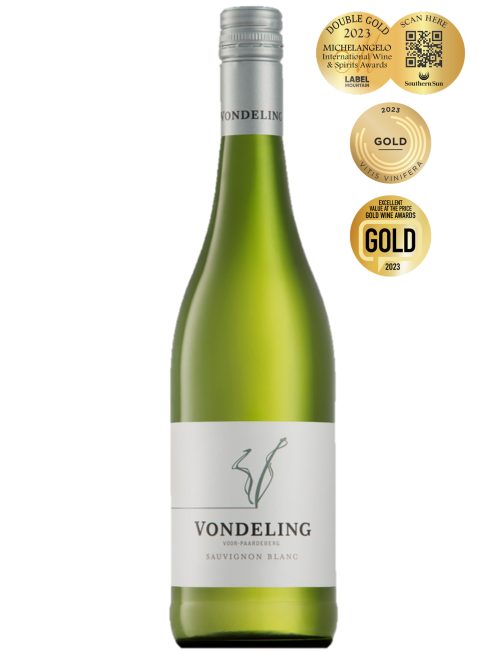
VINEYARDS
The grapes used to make this wine come from adjacent old vineyards planted in 1981 and 1984 respectively. For obvious reasons the one vineyard is called the Spice Block and the other the Long Block. Yields are rarely above 7t/ha and therefore naturally produce wines of structure and superior concentration. Our soils consist primarily of deep, well-weathered granite with moderate amounts of clay and iron. Such soils elevate the aromatics and promote finesse in the wine.
VINIFICATION
Grapes are picked in the cool, early hours of the morning then packed into a cold room for further cooling. Once the grapes are below 10°C they are gently destemmed, crushed and pressed speedily to tank. During this process, the sensitive Sauvignon Blanc juice is protected from oxidative degradation, through the judicious application of dry ice pellets. These pellets form an “insulation blanket” of carbon dioxide gas above the juice. The initial, free-run juice and press juice are managed separately, according to their character. The juice is cold settled for 48 hours before it is racked from its sediments and inoculated with pure yeast cultures. Cold fermentation at 12°C locks in freshness and ensures an intense tropical fruit bouquet. After fermentation, the wine is kept on the gross lees for 4 months. This practice adds weight and texture to the palate. TASTING NOTES & CELLARING & FOOD PAIRINGThe wine is crystal clear with a slight green edge. It displays an aromatic kaleidoscope, rich with perfumed peach, white pear, passion fruit and lime. These wonderful aromas prevail on the palate with added guava, pineapple, potpourri and nettle. The roundness of the palate is perfectly balanced by a steely mineral zest and enjoyable long finish. Enjoy chilled with fresh sourdough bread and soft cheeses or lime drizzled game fish.
Accolades 2020 Vintage: 2020 Gilbert & Gaillard International Challenge - Gold 2023 Vintage: 2023 Michelangelo- Double Gold 2023 Gold Wine Awards- Gold 2023 Vitis Vinifera- Gold Analysis pH 3.33 Total Acidity 5.8 g/l Residual Sugar 4.5 g/l Alcohol 12.78 % Download Tasting Sheet 2023 -
 VINEYARDS Made primarily from cold-pressed Merlot, the anchor vineyard for this delicious wine is over 20yrs old. Located on a granite spur in the foothills of the Paardeberg Mountain, the berries are well exposed to sunlight. Exposure to sunlight is essential to eliminate green flavours from the fruit. The soil has a high clay percentage, and this lends softness and volume to the wine. Great care is taken to ensure that the vines do not bear too great a crop or suffer from drought. This is done through green cropping of the vines and micro-irrigation. Both practices help to preserve the natural acidity, freshness and vibrancy of the grape aromas. VINIFICATION Grapes are picked at optimum ripeness in the early hours of the morning before being destemmed and chilled before pressing. This short route, from vine to press, ensures minimal degradation of the fruit aromas and a very moderate extraction of colour. All free-run juice is kept separate from the colour fraction to ensure a deliciously subtle salmon colour. The juice is cold settled to remove any coarseness and fermentation is done in stainless steel tanks. The wine is 100% unoaked. A six-month period of maturation on the yeast lees promotes richness and complexity. TASTING NOTES & CELLARING & FOOD PAIRING The wine has a delightfully delicate, salmon pink colour. It displays a bright bouquet of Turkish delight, raspberry coulis, passion fruit, and taught grapefruit. The palate is well rounded but refreshingly vibrant, packed with red berry flavours, seductive floral undertones, and a pleasant citrus twist. Pair with spicy Thai prawns, grilled Portuguese sardines, or a fresh tomato, feta and pomegranate salad. Accolades 2023 Platter’s Guide-3.5 stars (85Pts) 2023 Vintage: 2023 Gold Wine Awards-Gold 2023 Vitis Vinifera - Gold 2022 Vintage: 2022 Michelangelo - Gold 2022 Gilbert Gaillard -Gold 2021 Vintage: 2021 Michelangelo - Gold 2021 Vitis Vinifera - Gold 2021 Rose Rocks - Gold 2020 Vintage: 2020 Rose Rocks - Gold 2020 Vitis Vinifera Awards - Gold Analysis pH 3.47 Total Acidity 5.5 g/l Residual Sugar 3.6 g/l Alcohol 12.57 % Download Tasting Sheet
VINEYARDS Made primarily from cold-pressed Merlot, the anchor vineyard for this delicious wine is over 20yrs old. Located on a granite spur in the foothills of the Paardeberg Mountain, the berries are well exposed to sunlight. Exposure to sunlight is essential to eliminate green flavours from the fruit. The soil has a high clay percentage, and this lends softness and volume to the wine. Great care is taken to ensure that the vines do not bear too great a crop or suffer from drought. This is done through green cropping of the vines and micro-irrigation. Both practices help to preserve the natural acidity, freshness and vibrancy of the grape aromas. VINIFICATION Grapes are picked at optimum ripeness in the early hours of the morning before being destemmed and chilled before pressing. This short route, from vine to press, ensures minimal degradation of the fruit aromas and a very moderate extraction of colour. All free-run juice is kept separate from the colour fraction to ensure a deliciously subtle salmon colour. The juice is cold settled to remove any coarseness and fermentation is done in stainless steel tanks. The wine is 100% unoaked. A six-month period of maturation on the yeast lees promotes richness and complexity. TASTING NOTES & CELLARING & FOOD PAIRING The wine has a delightfully delicate, salmon pink colour. It displays a bright bouquet of Turkish delight, raspberry coulis, passion fruit, and taught grapefruit. The palate is well rounded but refreshingly vibrant, packed with red berry flavours, seductive floral undertones, and a pleasant citrus twist. Pair with spicy Thai prawns, grilled Portuguese sardines, or a fresh tomato, feta and pomegranate salad. Accolades 2023 Platter’s Guide-3.5 stars (85Pts) 2023 Vintage: 2023 Gold Wine Awards-Gold 2023 Vitis Vinifera - Gold 2022 Vintage: 2022 Michelangelo - Gold 2022 Gilbert Gaillard -Gold 2021 Vintage: 2021 Michelangelo - Gold 2021 Vitis Vinifera - Gold 2021 Rose Rocks - Gold 2020 Vintage: 2020 Rose Rocks - Gold 2020 Vitis Vinifera Awards - Gold Analysis pH 3.47 Total Acidity 5.5 g/l Residual Sugar 3.6 g/l Alcohol 12.57 % Download Tasting Sheet -
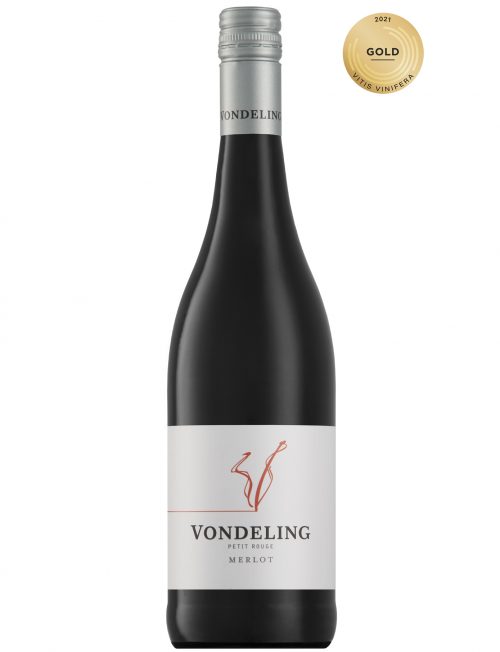 (100% Merlot) VINEYARDS The Merlot vineyard used in this wine is planted in a combination of well-weathered granite soils and beautiful “koffie klip” (shale) slopes. They are South-West facing slopes, which helps keep temperatures moderate. Optimum ripeness was at 24°B, with vibrant flavours of ripe, red fruits. Handpicking, under the watchful eye of the winemaker, ensures that only the finest fruit is delivered to the cellar. VINIFICATION The grapes are destemmed, but not crushed and whole berry fermentation at cool temperatures is practiced, to ensure a broad spectrum of bright fruit and spiciness without heavy tannin extraction. After fermentation, the wine is transferred to old 300Lt French oak barrels and the skins are pressed. Malolactic fermentation takes place in the barrel after which the wines are racked, the batches are blended, and the wine prepared to be bottled. TASTING NOTES & CELLARING & FOOD PAIRING The wine displays a bright ruby red colour. It shows a vibrant, fruitfilled aroma of sleek cherries, subtle raspberry, and soft, black pepper. The nose carries through beautifully to the palate and is nicely supported by refined tannins with a smooth finish. A dynamic wine, which can be enjoyed at many levels, but is exceptionally well pared with a traditional South African braai. Alternatively, a Sunday roast is a must. We hope you enjoy it. Accolades 2019 Vintage: 2020 Gold Wine Awards – Gold 2020 Vintage: 2021 Vitis Vinifera (Gold) 2019 Vinatge: 2020 Gold Wine Awards - Gold 2020 Vitis Vinifera Awards - Gold 2023 Platter's Guide -85 Points (Good Value) “Worth twice the price” - Michael Fridjhon Analysis pH 3.61 Total Acidity 5.7 g/l Residual Sugar 4.0 g/l Alcohol 13.72 % Download Tasting Sheet
(100% Merlot) VINEYARDS The Merlot vineyard used in this wine is planted in a combination of well-weathered granite soils and beautiful “koffie klip” (shale) slopes. They are South-West facing slopes, which helps keep temperatures moderate. Optimum ripeness was at 24°B, with vibrant flavours of ripe, red fruits. Handpicking, under the watchful eye of the winemaker, ensures that only the finest fruit is delivered to the cellar. VINIFICATION The grapes are destemmed, but not crushed and whole berry fermentation at cool temperatures is practiced, to ensure a broad spectrum of bright fruit and spiciness without heavy tannin extraction. After fermentation, the wine is transferred to old 300Lt French oak barrels and the skins are pressed. Malolactic fermentation takes place in the barrel after which the wines are racked, the batches are blended, and the wine prepared to be bottled. TASTING NOTES & CELLARING & FOOD PAIRING The wine displays a bright ruby red colour. It shows a vibrant, fruitfilled aroma of sleek cherries, subtle raspberry, and soft, black pepper. The nose carries through beautifully to the palate and is nicely supported by refined tannins with a smooth finish. A dynamic wine, which can be enjoyed at many levels, but is exceptionally well pared with a traditional South African braai. Alternatively, a Sunday roast is a must. We hope you enjoy it. Accolades 2019 Vintage: 2020 Gold Wine Awards – Gold 2020 Vintage: 2021 Vitis Vinifera (Gold) 2019 Vinatge: 2020 Gold Wine Awards - Gold 2020 Vitis Vinifera Awards - Gold 2023 Platter's Guide -85 Points (Good Value) “Worth twice the price” - Michael Fridjhon Analysis pH 3.61 Total Acidity 5.7 g/l Residual Sugar 4.0 g/l Alcohol 13.72 % Download Tasting Sheet -
Out of stock
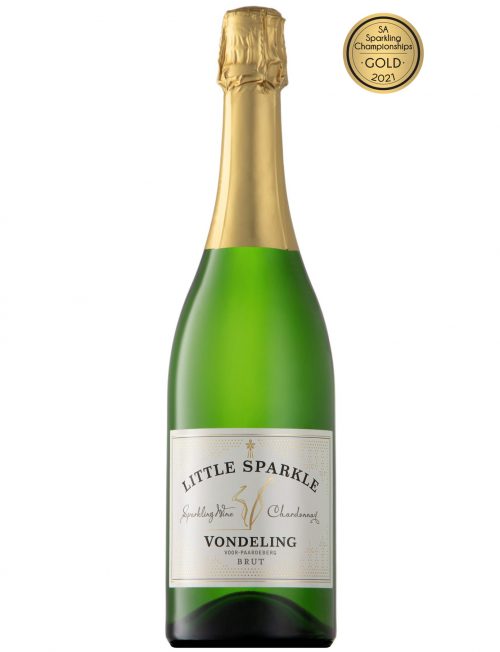
Little Sparkle
Inspired by our pioneering, limited release Methode Ancestral, our Little Sparkle is a fresh and vibrant offering for every occasion. This endearing wine will wash away the mundane and bring out the fabulous in you. Work on this project began several years ago and was born from the desire to make a premium Sparkling Wine affordable to ALL our loyal customers and wedding guests. We knew we had excellent Chardonnay, well suited to the production of premium sparkling wine but felt that the Rurale, our Methode Ancestral, was perhaps out of reach for some. We began by experimenting with different fermentation techniques that would offer you complexity without bottle fermentation and ageing. To put it simply we had to achieve this in the tank and then by using cutting edge new technology and equipment we were able to bottle the wine under high pressure and add that effervescent sparkle we love so much. VINIFICATION There is no doubt that great wine is made in the vineyard. At Vondeling we are blessed with a healthy assortment of soils, slopes and the climatic conditions that allow our grapes to ripen perfectly. We only work with grapes we farm ourselves and are therefore certain of their virility. The grapes for this wine originate from our steeper, South-facing slopes, which are naturally cooler. This helps to preserve the grape’s natural acidity, ensuring freshness and vibrancy. The grapes are picked during the early hours of the morning and crushed as whole bunches to limit oxidation and phenolic extraction. Keeping the colour bright and the aromas intact. Once pressed, the juice is allowed to settle in stainless steel tanks for 48hrs before the clear juice is racked and inoculated with a specifically neutral yeast, which will not create any overly tropical aromas. This is essential in creating a base wine suitable for sparkling wine production. Should there be too many overtly fruity aromas, the wine will be less refreshing and the effect of the bubbles less discreet. Fermentation encouraged to take place vigorously and at a warm temperature to promote mouthfeel and to dimmish fruity aromas. Fermentation takes approximately two weeks, after which the wine remains on the yeast lees for a minimum of 7months. During this time, through a process known as autolysis, the yeast cell walls disintegrate and impart a creaminess to the wine. Storage conditions are kept cool to encourage precipitation of some of the natural acidity and to block any secondary malo-lactic fermentation. The wine is now ready for a final filtration to clarify the wine and ensure its sterility before being bottled with an in-bottle pressure 5,4 bars. TASTING NOTES & CELLARING & FOOD PAIRING The wine is clear and vibrant with a hint of pale yellow on the fringe. Tiny chains of sparkling bubbles rise to the surface like miniature strings of pearls. On the nose, you’ll experience a mild citrus and brioche bouquet which is typical of premium sparkling Chardonnay. The Little Sparkle has a full palate with abundant bubbles and a smooth, soft, creamy finish Elegant and well-rounded, enjoy this wine wherever there is good company and great food. We recommend this wine with smoked salmon and cucumber sandwiches or delicious West Coast oysters. Accolades 2022 Gold Wine Awards - Gold 2021 SA Sparkling Wine Championship - Gold Analysis pH 3.3 Total Acidity 7.3 g/l Residual Sugar 11.7 g/l Alcohol 12.9 % Download Tasting Sheet -
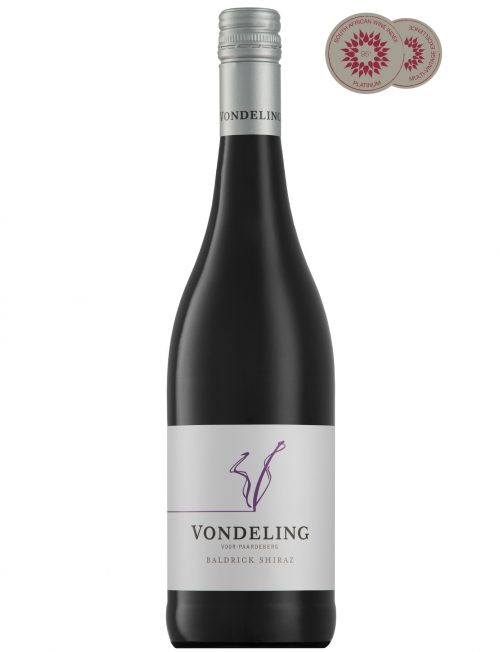 VINEYARDS For this delicious wine, we select the sites and clones which promote greater aromatics and a more accessible palate. The vineyards are planted on ancient, granite-derived soils on the south and southeast-facing slopes. Multiple clones of Shiraz are used to improve the complexity of the final wine. VINIFICATION Our grapes are hand-picked and chilled overnight before being destemmed and placed as whole berries in open-top fermenters. The berry mash is cold-soaked for 48 hours before fermenting spontaneously at 22°C. All fermentation is done by wild yeasts. During fermentation, the wine is mixed by hand and not by pump. Once fermentation is complete, the skins are pressed in a traditional basket press, and the wine is transferred to old 500 L French oak barrels. Malolactic fermentation occurs in the barrel and helps to soften and enhance the natural wine flavours. The wine spends one year in the barrel. TASTING NOTES & CELLARING & FOOD PAIRING The wine has a deep purple colour with flashes of scarlet. Ripe plum and mulberry aromas are uplifted with cherry blossom and violets. The palate is gentle and the tannins fresh but rounded. The aromatics continue into the palate with added blueberry, a hint of roasted black olives, and soft-spoken sweet spice. A versatile, medium-bodied wine, the Baldrick Shiraz will enhance many dishes and occasions. We recommend it with slow-cooked lamb, and mashed potato with caramelized onion gravy Accolades 2019 Vintage: 2021 Gold Wine Awards - Gold 2020: Vintage 2022 Platter’s Guide – 4 Stars 2021:Vintage 2023 Platter's Guide- 4 Stars Analysis pH 3.53 Total Acidity 5.4 g/l Residual Sugar 4.3 g/l Alcohol 13.57 % Download Tasting Sheet
VINEYARDS For this delicious wine, we select the sites and clones which promote greater aromatics and a more accessible palate. The vineyards are planted on ancient, granite-derived soils on the south and southeast-facing slopes. Multiple clones of Shiraz are used to improve the complexity of the final wine. VINIFICATION Our grapes are hand-picked and chilled overnight before being destemmed and placed as whole berries in open-top fermenters. The berry mash is cold-soaked for 48 hours before fermenting spontaneously at 22°C. All fermentation is done by wild yeasts. During fermentation, the wine is mixed by hand and not by pump. Once fermentation is complete, the skins are pressed in a traditional basket press, and the wine is transferred to old 500 L French oak barrels. Malolactic fermentation occurs in the barrel and helps to soften and enhance the natural wine flavours. The wine spends one year in the barrel. TASTING NOTES & CELLARING & FOOD PAIRING The wine has a deep purple colour with flashes of scarlet. Ripe plum and mulberry aromas are uplifted with cherry blossom and violets. The palate is gentle and the tannins fresh but rounded. The aromatics continue into the palate with added blueberry, a hint of roasted black olives, and soft-spoken sweet spice. A versatile, medium-bodied wine, the Baldrick Shiraz will enhance many dishes and occasions. We recommend it with slow-cooked lamb, and mashed potato with caramelized onion gravy Accolades 2019 Vintage: 2021 Gold Wine Awards - Gold 2020: Vintage 2022 Platter’s Guide – 4 Stars 2021:Vintage 2023 Platter's Guide- 4 Stars Analysis pH 3.53 Total Acidity 5.4 g/l Residual Sugar 4.3 g/l Alcohol 13.57 % Download Tasting Sheet



